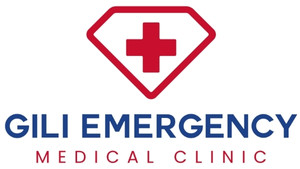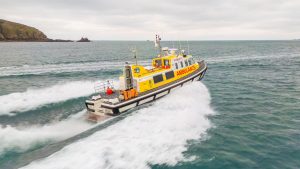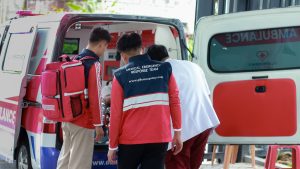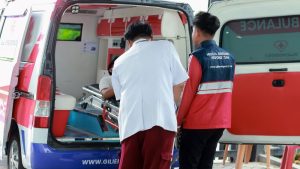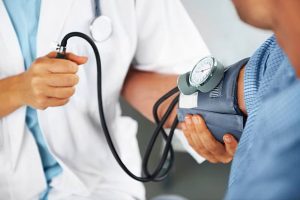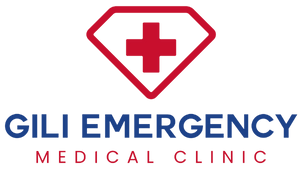Hey there, friend. If you’re planning a trip to Gili Meno (or you’re already there, feet in the sand and salt in your hair), here’s something you absolutely want in your mental toolkit: knowing about the Gili Meno sea ambulance. Yes, it may not be the vacation topic you’d pick first, but trust me—it’s one of those ”thank-goodness” things you’ll be glad you thought of ahead of time.
In this article, we’ll dive into what the Gili Meno sea ambulance service is, how the local emergency system works (including ambulance Gili, Gili medical service, Gili emergency service), and what you should do to prepare, all told in a friendly, conversational way. Think of me as your travel-buddy giving you the inside scoop.
Why the phrase “Gili Meno sea ambulance” matters
When you’re on a small island like Gili Meno, remote and idyllic, you might assume help is always close. But the reality: you might need a sea ambulance (boat transfer) rather than a typical “road ambulance”. That’s why knowing about the Gili Meno sea ambulance is so important.
Imagine this: you’re snorkeling in the turquoise water, you feel a sharp pain, or a dive goes wrong and you’re experiencing decompression symptoms. The regular clinic might stabilise you, but then you’ll need a boat to the mainland for full hospital care. That boat and coordination is exactly what the sea ambulance covers. According to travel-safety notes for the island, “A 10-30 minute boat ride plus an hour’s drive” may be needed to reach a major hospital.
So when you hear “Gili Meno sea ambulance”, think: remote island, limited infrastructure, and a lifesaving link between paradise and proper medical care.
How the local system works: ambulance Gili, Gili medical service, Gili emergency service
Let’s map out the players and steps clearly:
The local clinic and “every-day” medical care
On Gili Meno there are clinics staffed with doctors and nurses that handle usual stuff: cuts, stomach bugs, minor fractures. They’re part of what we might call “Gili medical service”. For example, the clinic coverage on the Gili Islands provides a station on Gili Meno.
When it gets serious → ambulance Gili
If your condition is more serious (head injury, diving accident, chest pain, major fracture), you trigger what they call “ambulance Gili” service. On Gili Meno this could mean a sandy-path buggy, a cart, or – importantly – a boat that becomes your sea ambulance. One article states:
“Since Gili Meno does not have a hospital, any serious condition must be treated on the mainland. A key part of the ambulance Gili Meno network is the boat ambulance — a speedboat equipped to transport patients safely across the sea to Lombok.”
24/7 support and after-hours care → Gili emergency service
Because emergencies don’t wait for daylight, there’s an on-call scheme: “Gili emergency service”. One travel-guide piece highlights that:
“When you’re staying on Gili Meno… nighttime feels like magic… But in an emergency, those same traits become vulnerabilities… there are clinics on the island staffed by doctors and nurses… a 10-30 minute boat ride plus an hour’s drive.”
So the sequence might go: you call the emergency line (Gili emergency service) → local doctor arrives (via Gili medical service) → if needed, you’re picked up by ambulance Gili and transferred by boat (sea ambulance) → you land on mainland hospital.
What to expect when you call the Gili Meno sea ambulance
Here’s a “walk-with-me” kind of breakdown so you know what you’ll see if this ever happens (hope it doesn’t—but good to know).
-
You decide to call – Maybe a dive buddy is unwell or you slip badly. You dial the number (save it ahead of time!). The dispatcher asks: where are you, what’s happening, are you conscious?
-
Local doctor/first responder arrives – On Gili Meno, the first team (Gili medical service) will arrive fast: maybe a buggy or cart over sand. They’ll stabilise you: pain relief, check vitals, splint if needed.
-
Assessment for transfer – Is it something manageable locally, or do you need advanced care? If transfer needed: this is where ambulance Gili (sea ambulance) kicks in.
-
Boat transfer begins – The boat picks you up, with paramedic/doctor onboard, heading across to mainland (e.g., Lombok) hospital. One article says it takes around “15-30 minutes, depending on sea conditions” for the boat leg.
-
Handoff to hospital – Once on the mainland, you go by land transport to the hospital. You’re now in full-fledged care.
-
Follow-up & insurance – The local clinic (Gili medical service) might help with paperwork, insurance, evacuation logistics etc.
Key features & challenges of the system
Let’s be honest: you’re in paradise, yes—but the emergency system has quirks. Good to know these.
✅ Strong points
-
The island has dedicated clinics with English-speaking staff familiar with tourists.
-
There is a sea ambulance/boat transfer option – not just “we hope you can get to a hospital”.
-
After-hours/emergency call-out service exists (important for when your carefree night takes a turn).
⚠️ Challenges
-
No full hospital on the island: The clinics are not equipped like big urban hospitals. So serious cases require transfer.
-
Transport logistics are tricky: sandy tracks, no regular roads, night darkness, sea can be choppy. One article notes night ambulance on sand tracks and sea transfer.
-
Weather/sea conditions: Rough water, storms can delay the boat. Also limited light at night.
-
Signal/mobilisation issues: Mobile coverage might be patchy; reaching the ambulance service may take your hotel or dive shop help.
My hypothetical micro-story (so you feel it, not just read it)
Imagine this: you’re on Gili Meno, snorkelling in late afternoon. The sea is a striking blue-green, you feel the cool water flow around your legs. Then you surface and you’re dizzy, ear ring, you feel tingling in your limbs. That’s bad—it could be decompression sickness. You call the number for the Gili Meno sea ambulance (you saved it earlier…). The local clinic responder arrives within minutes on a cart over sand, they give you oxygen, monitor you. They call: yes, you need evacuation. A speedboat (ambulance Gili) is waiting, you hop on, paramedic beside you, engine humming, waves slapping the hull, island lights fading behind you. You land on Lombok, then ambulance or van takes you to a hospital. You’re conscious, stable. You thought you were relaxing; now you’re alive because there was a system. That’s the value of this service.
Traveler tips: how to prepare so the “Gili Meno sea ambulance” works for you
Because you’re not only a visitor—you’re someone who wants to enjoy the island with peace of mind. Here are actionable tips:
-
Save the emergency number: On Gili Meno the number listed for the local clinic/emergency service is +62 82 -125-112-112 (via the Gili Emergency Medical Clinic page for Gili Meno).
-
Tell someone your location: Exact bungalow name, north beach vs south beach, coconut grove nearby—because on an island with no regular roads, “I’m near the palm trees” helps.
-
Check your travel insurance: Ensure medical evacuation including boat/sea ambulance is covered. The Gili medical service clinics mention insurance and coordinated evacuations.
-
Avoid risky behaviours: Diving deep without proper ascent, ignoring currents, biking at night on sand—these increase chances you’ll call the ambulance.
-
Stay sober-ish if possible: Nighttime accidents (bike, bar) are more likely when you’re drunk and the sand, dark, and unfamiliar terrain are unforgiving.
-
Know the red-flags: Head injury, breathing difficulty, chest pain, loss of consciousness, decompression signs—act immediately, don’t wait.
-
Ask your hotel or dive shop: They often know the on-island response system, may have direct contacts, and can assist if you call (they know the route, speak Bahasa, etc.).
-
Pack a small medical kit: Basic items (antiseptic, bandages, painkillers) can buy you time before you need to call the sea ambulance.
-
Check sea/weather conditions: If conditions are bad or you’re doing an adventurous dive, ask about evacuation readiness.
Wrapping it up: the peace of mind you gain
So, my friend—here’s the bottom line: By knowing about the Gili Meno sea ambulance, you’re not being a worried traveler—you’re being a smart one. You’re embedding a safety net into your trip, so when you’re lounging in a hammock, sipping coconut water, you can actually relax.
You’re covered by a system that includes the island clinic (Gili medical service), the emergency call-out (Gili emergency service), and the transport link (ambulance Gili). That means the words “sea ambulance” aren’t scary—they’re reassuring.
Plan smart, enjoy your time on Gili Meno, wander those white sands and turquoise seas with more joy than stress. Because if anything goes wrong, you’ll already know what you need to do—and that already gives you an advantage.
And remember: being prepared doesn’t mean you’re assuming something bad will happen—it means you’re allowing yourself to fully enjoy what you came for, with a calm in the back of your mind.
Safe travels, make those beach memories, and save that ambulance number just in case.
See you under palm trees!
